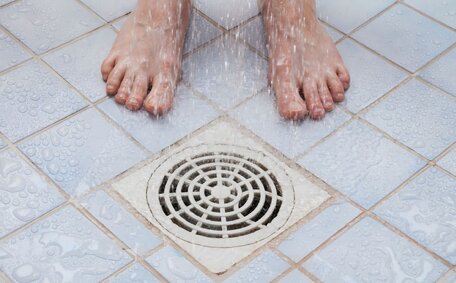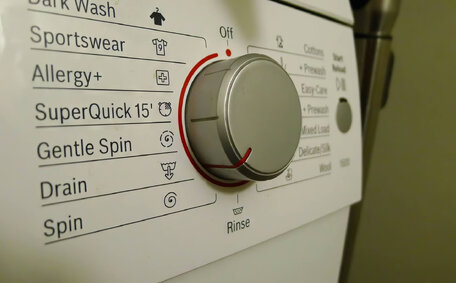
Baking Soda & Vinegar for Cleaning
Using baking soda & vinegar separately for cleaning is very effective; but mixing them dilutes their cleaning power. Learn how to use them properly.
Read MoreA thermostat regulates your water heater by acting as a temperature-sensitive switch, controlling ignition and water temperature in response to the heating source, whether it’s gas, electric, solar or another technology.
In a storage water heater, the thermostat gauges the water’s temperature within the tank. When your water cools below the thermostat’s set temperature, it triggers the heating system to turn on and reheat it. The typical temperature for your thermostat for storage systems is around 60 degrees Celsius. The thermostat switches off the heating system once the water reaches the preset temperature.
In a continuous flow system, the thermostat activates the heat exchanger to warm the water instantly upon detecting water flow when a tap is opened, and ceases heating when the tap is closed.
If the thermostat falters, the system could overheat, causing unnecessary energy use in your endeavor to manage it. To release pressure build-up from water turning into steam, storage water heaters come with a pressure relief valve. Setting thermostats too high leads to energy wastage by heating water more than required.
The ideal thermostat temperature setting depends on whether you have a storage or a continuous flow system type:
Settings higher than necessary not only lead to excess energy consumption but may also encourage bacterial growth in the system or pipes. Ensure you adopt the most efficient temperature setting to cut down your system’s energy consumption.
Here are some other tips for efficiency:
Adjusting your thermostat lower can significantly reduce the amount of energy use reflected on your energy bills. Properly maintaining your system safeguards low energy use for your hot water, ensuring it operates both safely and efficiently for the long haul.
Insulating your hot water system and pipes effectively reduces energy consumption and lowers energy costs. Insulation creates a barrier that prevents heat loss from hot water pipes and storage tanks.
Hot water loses heat to the surrounding air through uninsulated tanks and pipes, causing substantial energy loss and higher energy bills. Insulation helps retain heat, thereby decreasing the frequency of reheating water and conserving energy.
Here are some of the main benefits of insulating hot water systems and pipes:
Any pipes or tanks carrying hot water should be insulated, including:
It’s also wise to insulate cold water lines to guard against condensation and leaks.
Common insulation materials for hot water plumbing include:
Optimal insulation with an R-value of at least R1.5, such as closed-cell foam or rubber, provides excellent moisture resistance and efficiency.
While DIY kits are available, hiring a licenced plumber ensures proper materials and technique:
Professional evaluations pinpoint where insulation is essential, which is particularly important if your system operates above optimal levels. Moreover, skilled installers can completely weatherproof insulation for outdoor components.
The energy savings from insulating water systems accumulate significantly over time. The initial cost of insulation is swiftly offset by subsequent energy savings.
Thermostat issues can lead to a number of problems with your hot water system, from fluctuating temperatures to complete failure. Promptly identifying and fixing thermostat issues is vital for safety, system efficiency, and avoiding expensive future repairs.
Watch for these common signs your thermostat may be malfunctioning:
Even intermittent problems can do harm and should be addressed before they worsen or cause damage.
Common causes of faulty thermostats include:
Sediment accumulation over time can result in thermostat malfunction.
If thermostat issues are suspected, proceed with caution. Issues like overheating tanks can lead to dangerous pressure build up. Also Exercise caution to avoid electric shock, particularly from exposed wiring behind the system’s access panel.
Rather than tackling extensive repairs yourself, contact a licenced plumber to assess the thermostat and system. Professionals have specialised tools and expertise for safely diagnosing issues. They can also check associated parts like heating elements and recommend solutions tailored to your specific unit.
For basic troubleshooting, first try these quick steps:
Should problems continue or if in doubt, cease further attempts to repair. Schedule a service with qualified technicians to restore your system’s reliability.
Catching and correcting small thermostat issues promptly keeps systems safer and more energy efficient over time. Ignoring problems risks escalating damage, so engage experts at the first signs of trouble.
Using baking soda & vinegar separately for cleaning is very effective; but mixing them dilutes their cleaning power. Learn how to use them properly.
Read MoreBlocked drains are usually caused by buildup of hair, grease, debris and more in your pipes. Fix the problem with professional drain unblocking services to get your drains flowing freely again. Contact us for affordable drain unblocking.
Read MoreWhen you suspect a gas leak or damaged gas line, contact a licensed gas fitter immediately to locate and repair it. A gas line repair involves sealing leaks, replacing corroded or damaged pipes and testing all connections for safety before restoring gas supply.
Read MoreLilyfield, 2040 NSW
We will call back as soon as possible.




